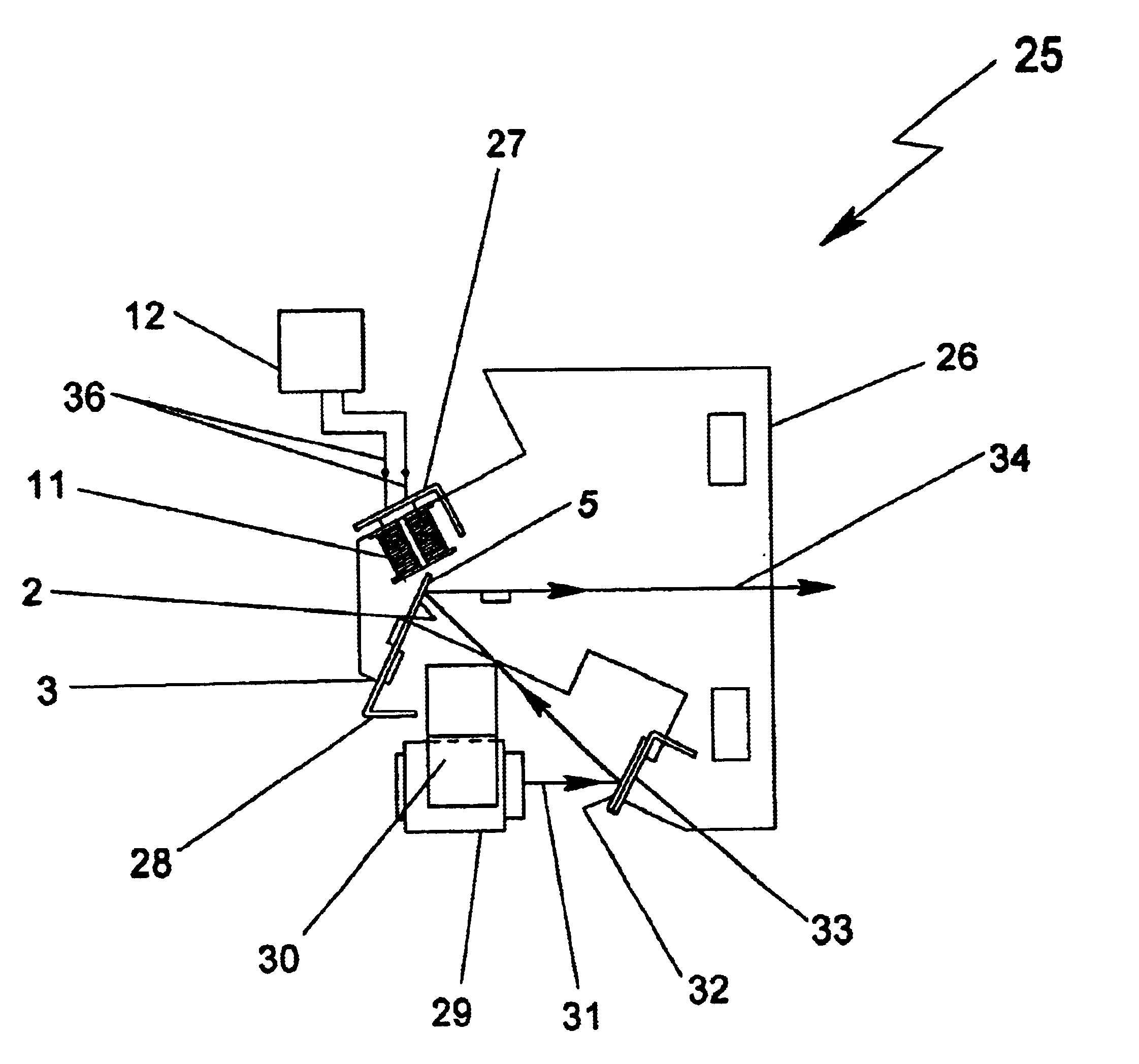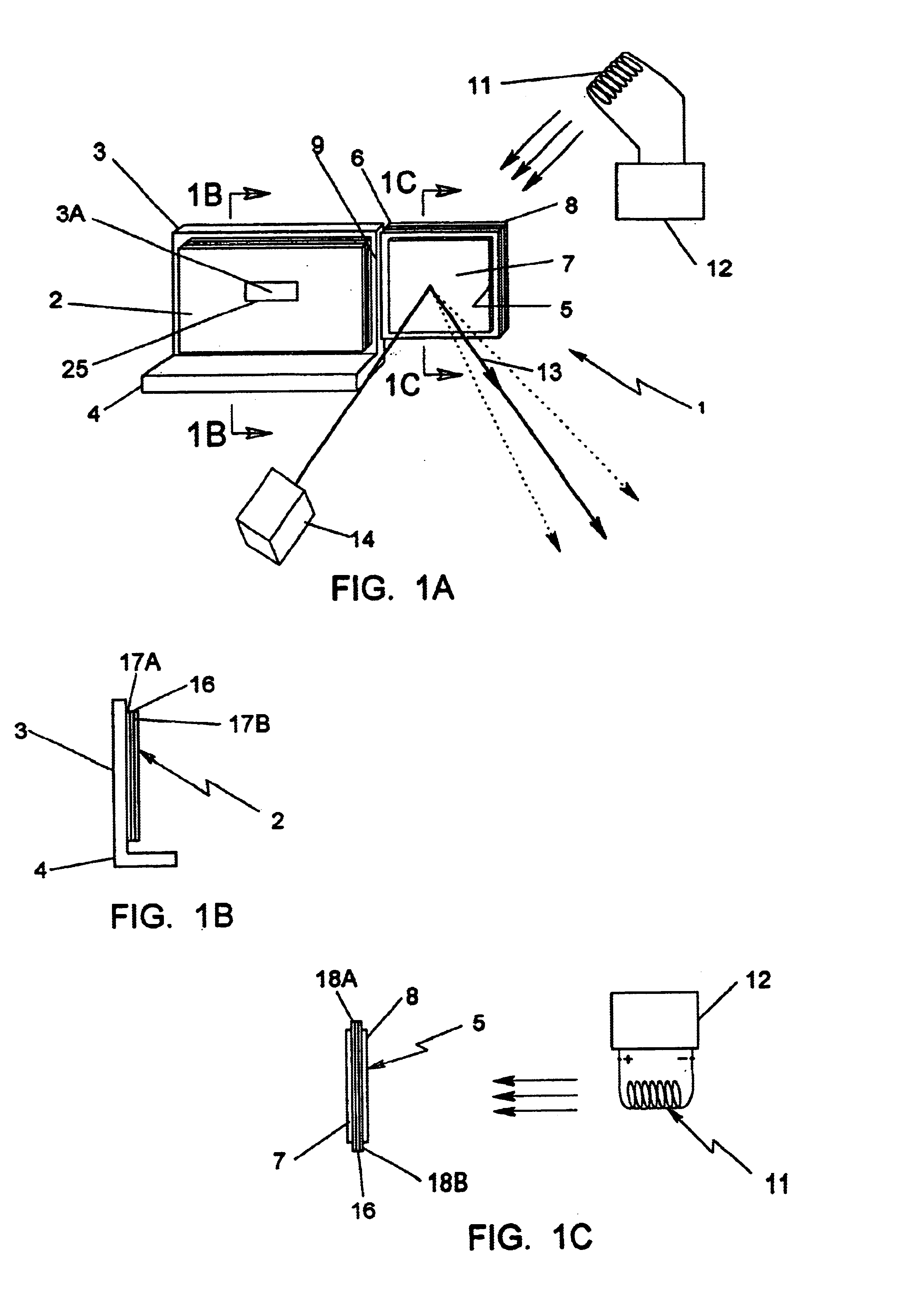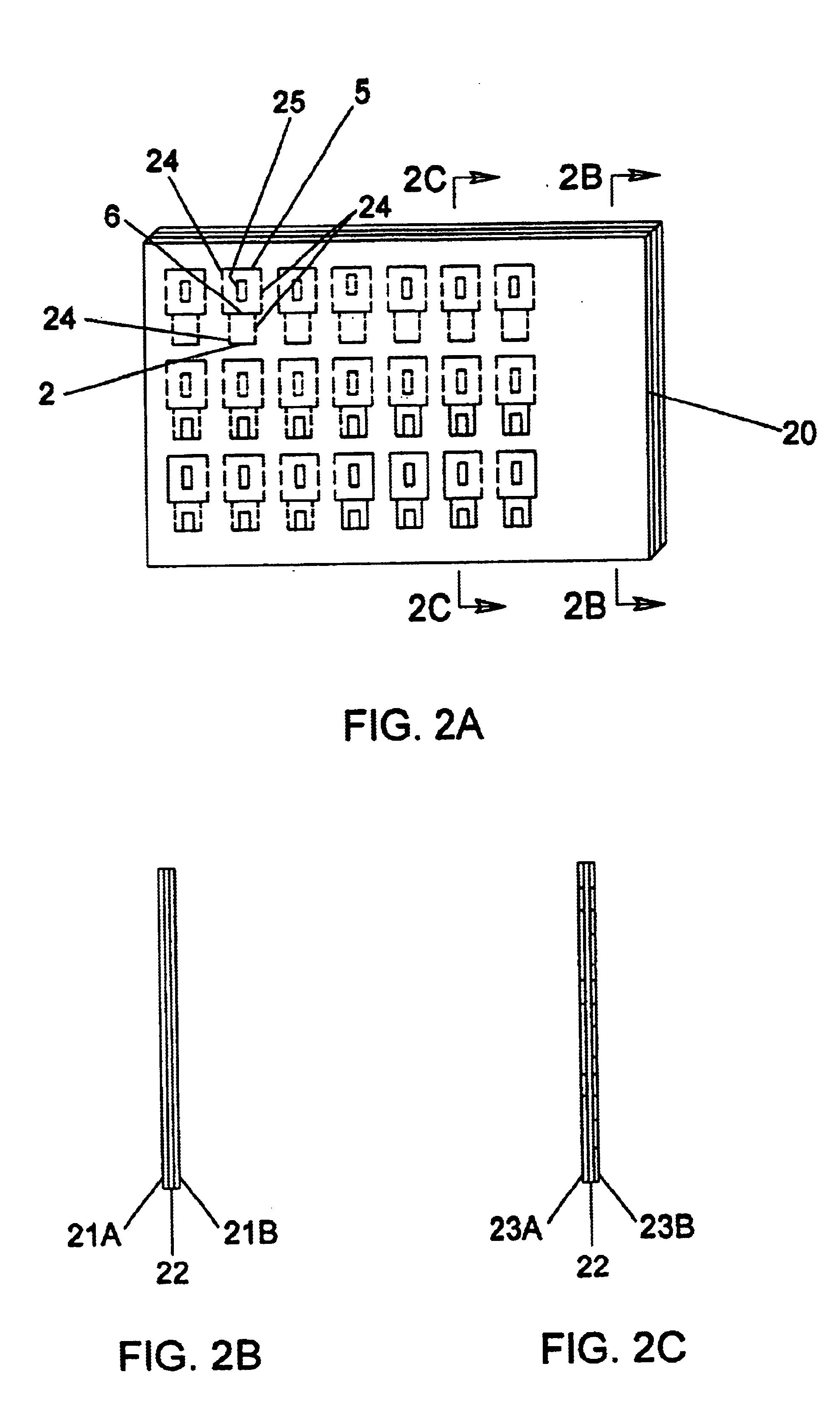Laser beam scanning device employing a scanning element having a flexible photo-etched gap region disposed between an anchored base portion and a light beam deflecting portion having a natural frequency of oscillation tuned by the physical dimensions of said flexible photo-etched gap region and forcibly oscillated about a fixed pivot point at an electronically-controlled frequency of oscillation substantially different from said natural resonant frequency of oscillation
a scanning element and scanning element technology, applied in the direction of electromagnetic radiation sensing, dynamo-electric converter control, instruments, etc., can solve the problems of large and complex inability to produce prior art laser scanning mechanisms, and inability to accurately detect the position of the scanning element, so as to avoid shortcomings and drawbacks
- Summary
- Abstract
- Description
- Claims
- Application Information
AI Technical Summary
Benefits of technology
Problems solved by technology
Method used
Image
Examples
Embodiment Construction
The illustrative embodiments of the present invention will be described with reference to the figure drawings wherein like elements and structures are indicated by like reference numbers.
Over of the Laser Beam Scanning Mechanism Employed with Bar Code Symbol Readers of the Present Invention
In FIG. 1A, the laser beam scanning mechanism of the present invention 1 is shown having a base portion 2 mounted (i.e., anchored) on a support structure 3 of an optical bench 4, and a laser beam deflecting portion 5 extending from the base portion, with a flexible gap portion 6 disposed therebetween.
As shown, the laser scan deflecting portion 5 bears a light deflecting element 7 on its front surface and a thin permanent magnet element 8 mounted on its rear surface. The light deflecting element 7 can be realized in a number of different ways, namely: as a light reflective element such as a mirror; as a light diffractive element such as a reflection or transmission hologram (i.e., HOE); as a light ...
PUM
 Login to View More
Login to View More Abstract
Description
Claims
Application Information
 Login to View More
Login to View More - R&D
- Intellectual Property
- Life Sciences
- Materials
- Tech Scout
- Unparalleled Data Quality
- Higher Quality Content
- 60% Fewer Hallucinations
Browse by: Latest US Patents, China's latest patents, Technical Efficacy Thesaurus, Application Domain, Technology Topic, Popular Technical Reports.
© 2025 PatSnap. All rights reserved.Legal|Privacy policy|Modern Slavery Act Transparency Statement|Sitemap|About US| Contact US: help@patsnap.com



